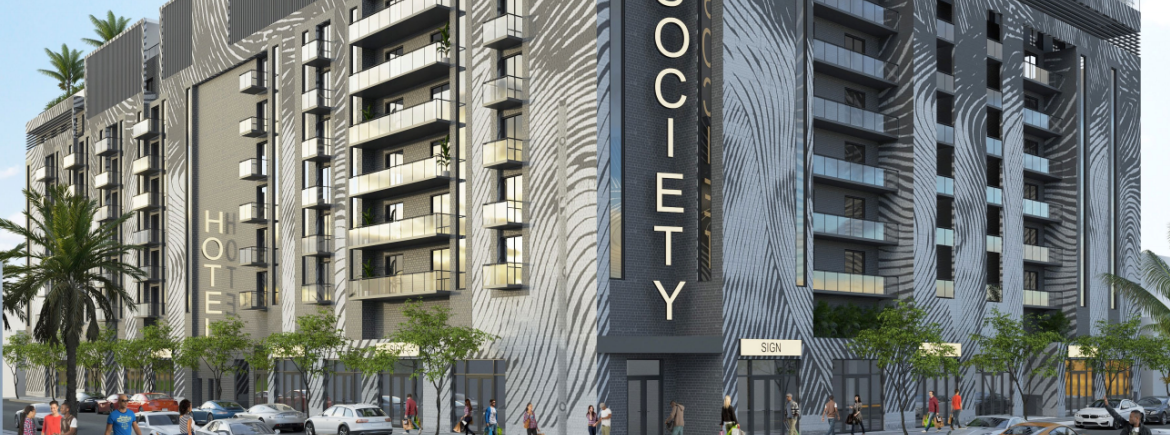
The Whale & Star building in Miami’s Wynwood Arts District could be redeveloped into a mixed-use project featuring a hotel, condos and commercial space.
The city’s Wynwood Design Review Committee will consider plans for the 37,822-square-foot site at 2215-2237 NW First Place, 175 NW 22nd St. and 170 NW 23rd St. on Sept. 10. It currently has 27,406 square feet of commercial buildings, which would be demolished.
The applicant, Miami-based Whale & Star Wynwood Owner LLC, acquired the property for $24 million in 2023.
Under the proposal, the eight-story building would total 246,307 square feet and feature 214 hotel rooms, 87 condo units, 11,350 square feet of commercial space and 87 parking spaces.
That would include 8,935 square feet of ground-floor commercial space, with the rest comprising a rooftop restaurant and bar. The roof would also feature a pool and a gym. On floors three through five, the hotel rooms would range from 223 to 425 square feet. The condos, on floors six through eight, would range from 406-square-foot studios to 1,592-square-foot loft-style units with up to three bedrooms and mezzanine decks.
Local attorney Steve Wernick, who represents the developer in the application, said the hotel component would be branded and operated by Cloud One Hotels. The condo residents would also receive hotel services and share in the hotel amenities, he added.
The developer is seeking several waivers, including to increase maximum lot coverage, reduce parking by 30% and allow parking on the mezzanine level.
Source: SFBJ









